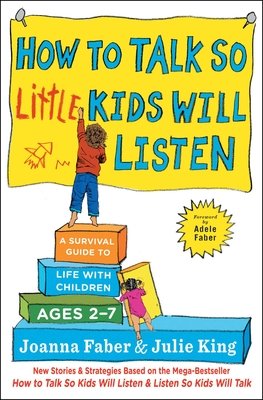What to Read Now:
Two Compelling Novels and a Go-To Parenting Book
by Jennifer Ridgway
It’s the dead of winter. The holidays have come and gone, the kids are back in school, and maybe you, like me, have made a resolution to read more. If you’re searching for a new read, we’ve found three fantastic, very different books to help you kick off a great reading year.
-
The Bear and the Nightingale
Available from:Some authors create a world so vivid, so immersive, so unlike your own that you can’t help but remain there long after you finish reading. Katherine Arden has created such a world in her debut novel, The Bear and the Nightingale. Set in the far north of Rus’ (what would later become Russia) during the 14th century, the small village where Vasya Petronova lives spends most of its year in winter. The village honors the sprites and fears the demons that live all around them. Vasya has a special ability to see the sprites and demons, and her life becomes more exciting as she communicates with them and learns from them.
Vasya is a bit of a wild child, especially compared to the norms of the time. While her father, a minor nobleman and widower, seems to enjoy his daughter’s spirit, he’s unsure how to tame her as she ages. When he marries Anna, a young woman who grew up in the city of Moscow and is very devout to the new Christian religion, Vasya’s freedom is challenged. Then, when a priest settles in the village, Vasya finds herself not only fighting for her own freedom, but for the village’s ancient beliefs, which are starting to give way to the priest’s beliefs.
Arden’s book brilliantly melds fantasy, history, magic, religion, politics, and folklore into an enchanting tale. I was completely captured by the story, so vividly imagined and yet so firmly rooted in reality. It went beyond simply imagining the book; it was almost a sensory experience — the chill of the air, the smell of the food cooking in the hearth, the richness of the sights, the fears and triumphs.
A quick word on the reading: If you are unfamiliar with reading books rooted in Russia, it can take a bit of time and effort to familiarize yourself with the characters, as each typically has multiple names and nicknames. Arden does also use some Russian vocabulary and naming conventions. Luckily, there’s a glossary in the back that serves as a great resource as you start the novel.
The Bear in the Nightingale is the first book in a planned trilogy. While this installment has a satisfying conclusion, I’m very excited to read more of Vasya’s story. And, even more so, I look forward to reading more of Arden’s amazing writing.
Also available from: -
The Girl Before
Available from:One Folgate Street is a modern architectural masterpiece. Designed by an award-winning, enigmatic architect, Edward Monkford, it is all clean lines with no clutter and state-of-the-art technology (its built-in computer system is aptly named “Housekeeper”). With a well-below market value rent, the trade-off to living there is the rigorous application process and the contract’s looooooong list of rules. But for the two women who take center stage in JP Delaney’s psychological thriller, it is worth it.
The Girl Before follows the women’s experiences with the house in parallel. Both women come to the house after experiencing tragedy. Jane, the current resident, discovers that the previous resident, Emma, died in the house. The chapters alternate between Jane’s story and Emma’s story as Jane tries to figure out what happened to Emma. The house itself is also a character, central to the plot. It creates a sense of tranquility and safety at points, but also elicits fear and claustrophobia along the way. There were moments in the book that brought thoughts of Stephen King’s Christine to mind: Is the house itself somehow involved?
The Girl Before features one of fiction’s current trends: the unreliable narrator (see: Gone Girl, The Girl on the Train). As the women’s stories unfold, we begin to question their truth. Delaney also does something interesting to pull readers into the book — interspersed between chapters are questions from the arduous questionnaire that the applicants have to fill out. The questions are related to what follows in the story, but they also cause the reader to pause and reflect. How would you answer? How do you think the two women would answer? Why would Monkford ask that question? It is an interesting device that would also make for great book club discussions.
With enough doubt and twists to make the reader constantly question their assumptions — some obvious red herrings, some true possibilities — The Girl Before is hard to put down once you start it.
Also available from: -
How to Talk So Little Kids Will Listen: A Survival Guide to Life with Children Ages 2-7
In the vast world of parenting books, there are a few that stand the test of time. One of these books, How to Talk So Kids Will Listen & Listen So Kids Will Talk by Adele Faber and Elaine Mazlish, began popping up in my life around the time my twins were two years old — it was (and continues to be) referenced in many other parenting books I read and it was recommended by fellow parents with older children. At that time, though, I found that, while the advice seemed great, a lot of it just wasn’t possible to use with children as young as mine. Needless to say, I was thrilled when I saw that How to Talk So Little Kids Will Listen was coming out. Based on the principles of the original, it tailors the advice and techniques to younger kids, specifically ages two through seven.
The authors of the new book are a draw: Joanna Faber is the daughter of one of the authors of the original book, so not only did she grow up in an environment that used the techniques, she also believes in them for raising her own kids. Julie King, the coauthor, is a lifelong friend of Joanna’s who has also been around these philosophies for most of her life. For years, both Faber and King have been leading parenting workshops based on the How to Talk principles, and they bring their experience to this book. It is a combination of philosophy and technique and real-world examples, both from their own parenting journeys and from workshop participants.
The first part of the book is the nuts and bolts of it — the explanation of the techniques and how to use them. The second part uses the techniques in real world examples and specifically addresses some of the common challenges that arise in this age group; this is where you’ll find stories from actual parents on how they used the techniques to overcome tricky situations.
What are some of the tools that they recommend? Perhaps the most important is one that may be familiar to many: Acknowledge your child’s feelings, regardless of how ridiculous you may think they are in the moment. Another tool is to offer your child a choice rather than a command whenever you can. If you offer a limited choice, you can still get the desired outcome while your child feels that they have a little input and control. For example, a common refrain in the morning in our house is, “Would you like to go potty first or brush your teeth first?” I get the desired outcome no matter which option they choose (teeth brushed and empty bladders), and my twins feel as though they are a part of the process.
The authors include illustrations, highlight some important points to keep in mind, and provide quick summaries to help. There is a chapter that specifically addresses how the tools and techniques can be applied and adapted for children with sensory processing disorders and autism spectrum disorders. It’s also worth noting that one of the parents whose stories are used as examples throughout the book is a mother of twins; I’ve found that many parenting books don’t specifically address this unique dynamic, so I appreciated it. My copy of How to Talk So Little Kids Will Listen is highlighted like crazy, and, while I initially read it start to finish, it’s a book that I’ll revisit as I try to hone my skills when specific problems arise. I think it’s bound to become a go-to book for parents of young children.
What books have you been reading and loving lately? Let us know in the comments below!



